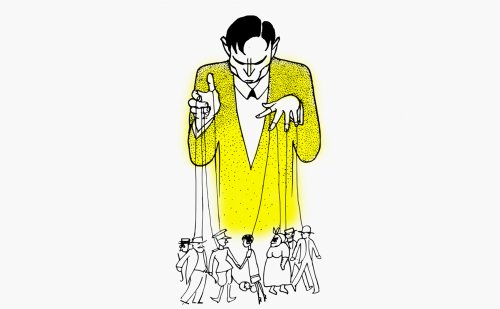Graphology is a teaching according to which handwriting is strongly connected to a person’s psychological characteristics. Accordingly, conclusions about a person’s personality can be drawn from their handwriting. It sounds intriguing, and it would be wonderful if it were true. But it’s not. Not at all.
However, when I started writing about graphology, I encountered an unexpected problem — there are very few systematic refutations. This creates an interesting situation: the scientific community has long agreed that graphology has as much in common with science as astrology does, but arguments supporting this position are hard to find online. Meanwhile, there is an abundance of articles praising the effectiveness of graphology: both “scientific” ones (one, two and three) and popular ones (one, two and three).
No, I’m not saying that there are no counterarguments at all. Here are some scientific ones: first, second, third. And here are some popular ones: first, second. But there are undeniably more texts in support of graphology, and that’s a fact.
So, does this mean graphology actually works?
Where did I even get the idea that the scientific community dismissed this teaching as groundless?
First, let’s address where I got this idea (by the way, this is the first and foremost question of a skeptic: WHERE DID YOU GET THIS FROM?):
First. It’s too good to be true. Even psychological analyses based on videos are complete nonsense, so what can be said about analyzing scribbles?
Second. The graphological analyses I’ve seen in the media resemble astrological predictions — maximally abstract and general, meaning unserious. Moreover, I have never seen such predictions verified. But my sample size is microscopic, yes, I am non-representative. However, the absence of information about graphology in everyday life suggests that it’s unnecessary. Perhaps because it’s a sham?
Third. My sources say that graphology is nonsense. Why should my sources be trusted? Because they can be verified and are supported by the expert community. Additionally, I provide these sources for your verification and am ready to stake my reputation on them. But, as you can see, dealing with sources here is tricky. Yes, there are articles debunking graphology, but they are insufficient; we need meta-analyses.
Now to the question, “Does graphology work at all?”
Spoiler: it doesn’t. But it’s an interesting situation. Thorough research proving the complete inefficacy of graphology was conducted before the internet era. That’s precisely why these works are absent online, and to access them, you need to go to a library. An analog one — with a librarian and paper books. And search there for works like these:
-
“Graphology: A Comprehensive Critique” (1988): A study summarizing existing data and criticizing graphology from the perspective of scientific methodology. The results show a lack of sufficient evidence supporting graphological methods.
-
“The Predictive Validity of Graphological Inferences: A Meta-Analytic Approach” (1989): A meta-analysis evaluating the accuracy of graphological predictions, showing they are no better than random guesses. The results indicate that graphological methods cannot be reliably used for personality assessment.
-
“The Bottom Line: Effect Size in Graphological Research” (1990): A broad meta-analysis of graphological studies, finding that graphological methods fail to produce results in determining psychological characteristics. The study revealed that the effect size of graphology is negligible and does not meet the standards of scientific methodology.
Thus, it turns out that the scientific community settled the graphology issue back in the 1990s. Meanwhile, graphologists continue to write actively, creating the illusion of the effectiveness of their “science.” Why? They need scientific publications to build trust, prestige, and justify the cost of their services.
What do graphologists do to stay afloat?
They establish international and national associations, schools and courses. Naturally, these institutions issue diplomas and certificates.
How serious are graphologist associations considered to be?
Very serious. But only within the graphological community itself. Like astrologers’ associations. From the perspective of the scientific community, these associations have no recognition whatsoever.
Graphologist associations play a crucial role in maintaining their legitimacy by organizing conferences, seminars, and certifying “experts.”
If graphology is such a marginal field, why do some people still take it seriously?
-
First, graphologists are very active — they write articles, books, and give TV interviews. Uninformed individuals often fall for the solid public image, certificates, diplomas, and scientific-sounding terminology.
-
Second, until the mid-20th century, graphology was regarded as a scientific discipline until practice showed it was a sham. Graphologists refer to this history, claiming, “See? We didn’t come out of nowhere.”
-
Third, graphology mimics handwriting analysis, which is used in forensics. But handwriting analysis doesn’t make any conclusions about a person’s psychology; it simply studies handwriting’s graphic features for forensic purposes. Sometimes, handwriting analysis is used in psychiatry as a supplementary tool to track disease dynamics. But we usually call all this “graphology,” which graphologists exploit.
Here are the favorite arguments of graphologists, which they (believe) prove that graphology is a science:
- The individuality of handwriting: Since handwriting is a unique form of self-expression, it can reflect individual personality traits, emotional states, and psychological characteristics.
Maybe. But there is no reliable evidence that specific handwriting features are consistently connected to particular character traits. Studies show that the accuracy of graphological interpretations does not exceed randomness. - Graphology as an art: Many graphologists claim that, although graphology may not meet traditional scientific criteria, it doesn’t have to, because it is an art. And precisely as an observational art, it can be effective.
Maybe. But while intuition indeed plays a role in certain professions, it cannot serve as a sufficient basis for recognizing graphology as a reliable method. Scientific methods require objectivity, falsifiability, and repeatability — all of which graphology fails to provide. - Analogy with other forms of analysis: Graphologists love to draw parallels between graphology and psychological tests, which also often use indirect methods of assessment. They argue that handwriting, like other forms of behavior, can be interpreted to extract psychological information.
It cannot. Graphology still lacks sufficient theoretical foundations, even those as flawed as those in indirect psychological tests (which are often rightly criticized). - Subjective success: Graphologists love to cite isolated successful cases where their analysis was deemed accurate by clients. Such examples may indeed seem convincing, but we know this is called “cherry-picking,” and it is unscientific.
If graphology is a sham, how do people become “experts” in it?
Usually, this requires taking some courses. Since graphology is not recognized by the scientific community, there are no standard academic paths for studying it in this field.
Some people become “experts” through self-study — reading books, articles, and other materials.
Others simply join graphologist associations and automatically receive some kind of certificate, becoming “experts” in the shortest possible time.
Where do instructors in graphology schools come from?
Nowadays, it’s just a closed loop of mutual certification and “professional development.” But the founding fathers of graphology — Jean-Hippolyte Michon and Ludwig Klages — were, of course, self-taught. Later, they became the “academic” foundation of graphology.
Some of the students of these first graphologists established their own schools. But many operate entirely independently: conducting research, writing books and articles, and founding graphology firms.
Summary
Graphology is a pseudoscience. Essentially, graphological analysis is the same kind of fortune-telling as tarot cards or astrology, relying on subjective intuitive interpretations.
Scientific research does not confirm that handwriting analysis can reliably predict or reflect personal traits. Scientific institutions do not recognize graphology as a scientifically grounded method of analyzing personality and behavior.
Although there are certain arguments in favor of graphology in the form of articles in scientific databases and journals, upon closer examination, they always reveal flaws that render the authors’ conclusions invalid. And you understand, if something needs to be confirmed, we’ll find a “scientific” article to confirm it. Do you need to confirm that remote holography protects against psychotronic attacks? — Please, go ahead. Or maybe you want to justify the noosphere paradigm of Russian studies, Eurasianism, and sustainable development as the foundation of noosphere education and upbringing in 21st-century Russia? — That’s possible too. It’s the same story with graphology.
If you value your time and reputation, turning to graphology is definitely not for you.





























